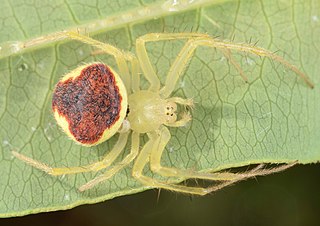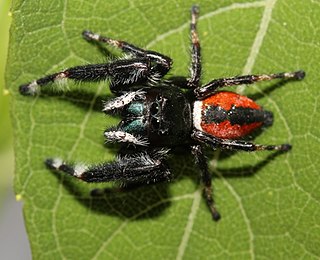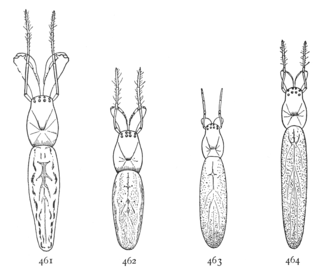 W
WAnelosimus eximius is a species of social spider in the genus Anelosimus, native to the Lesser Antilles and the area from Panama to Argentina. Colonies can comprise several thousand individuals.
 W
WAntrodiaetus pacificus is a species of mygalomorph spiders native to the Pacific Northwest. Both male and female were first described by French arachnologist Eugène Louis Simon in 1884 under the name Brachybothrium pacificum. The genus name is a combination of the Greek "antrodiaitos" (αντροδιαιτος), meaning "living in caves", "antron" (αντρον), meaning "cave", and "diaita (διαιτα), meaning "way of life, dwelling". The specific epithet refers to its geographical distribution along the pacific coast of North America, between San Francisco Bay and Alaska. It is the northernmost mygalomorph spider in North America.
 W
WAraneus alboventris is a species of orb weaver in the spider family Araneidae. It is found in the United States.
 W
WAraneus juniperi is a species of spider in the orb weaver family (Araneidae). It is found in the USA and Canada.
 W
WAraneus pratensis is a species of orb weaver in the spider family Araneidae. It is found in the United States and Canada.
 W
WAxyracrus is a genus of South American anyphaenid sac spiders containing the single species, Axyracrus elegans. It was first described by Eugène Simon in 1884, and has only been found in Chile and Argentina. It is a senior synonym of "Schiapellia"
 W
WCallobius severus is a species of spider found in parts of the United States and Canada. Individuals reach roughly 19 mm (3/4") in size, with males typically appearing smaller than females. Cephalothorax and legs are reddish to dark brown and the abdomen is dark to light grey with fine hairs, often appearing with large, bilaterally mirrored paler spots. Males feature large, extended palps with prominent projections.
 W
WDolichognatha is a genus of tropical and subtropical long-jawed orb-weavers that was first described by Octavius Pickard-Cambridge in 1869. Originally placed with the Archaeidae, it was transferred to the Araneidae in 1967, and to the Tetragnathidae in 1981.
 W
WEbo latithorax is a species of running crab spider in the family Philodromidae. It is found in the United States and Canada.
 W
WHexura picea is a species of spider. It is from the dwarf tarantula family, Mecicobothriidae. It was described by Simon, 1884 — USA.
 W
WMastophora bisaccata is a species of orb weaver in the spider family Araneidae. It is found in the United States and Mexico.
 W
WOlios giganteus is a species of giant crab spider in the family Sparassidae. It is found in the United States and Mexico.
 W
WPhidippus clarus is a species of jumping spider found in old fields throughout eastern North America. It often waits upside down near the top of a plant, which may be useful for detecting prey, and then quickly jumps down before the prey can escape. The spider is one of 60 species in the genus Phidippus, and one of about 5,000 in the Salticidae, a family that accounts for about 10% of all spider species. P. clarus is a predator, mostly taking insects, other spiders, and other terrestrial arthropods.
 W
WPhilodromus marxi, the metallic crab spider, is a species of running crab spider in the family Philodromidae. It is found in the United States.
 W
WPhrynarachne ceylonica is a species of spiders of the genus Phrynarachne. It is found in China, Japan, Sri Lanka and Taiwan. The species is known to discharge foul smell, which may help it attract prey and deter predators. Its morphology is similar to bird's dung, and hence its common name. This strategy is used by the spider to catch prey who thinks that it is actually dung, not an animal.
 W
WTetragnatha straminea is a species of long-jawed orb weaver in the spider family Tetragnathidae. It is found in the United States, Canada, and Cuba.